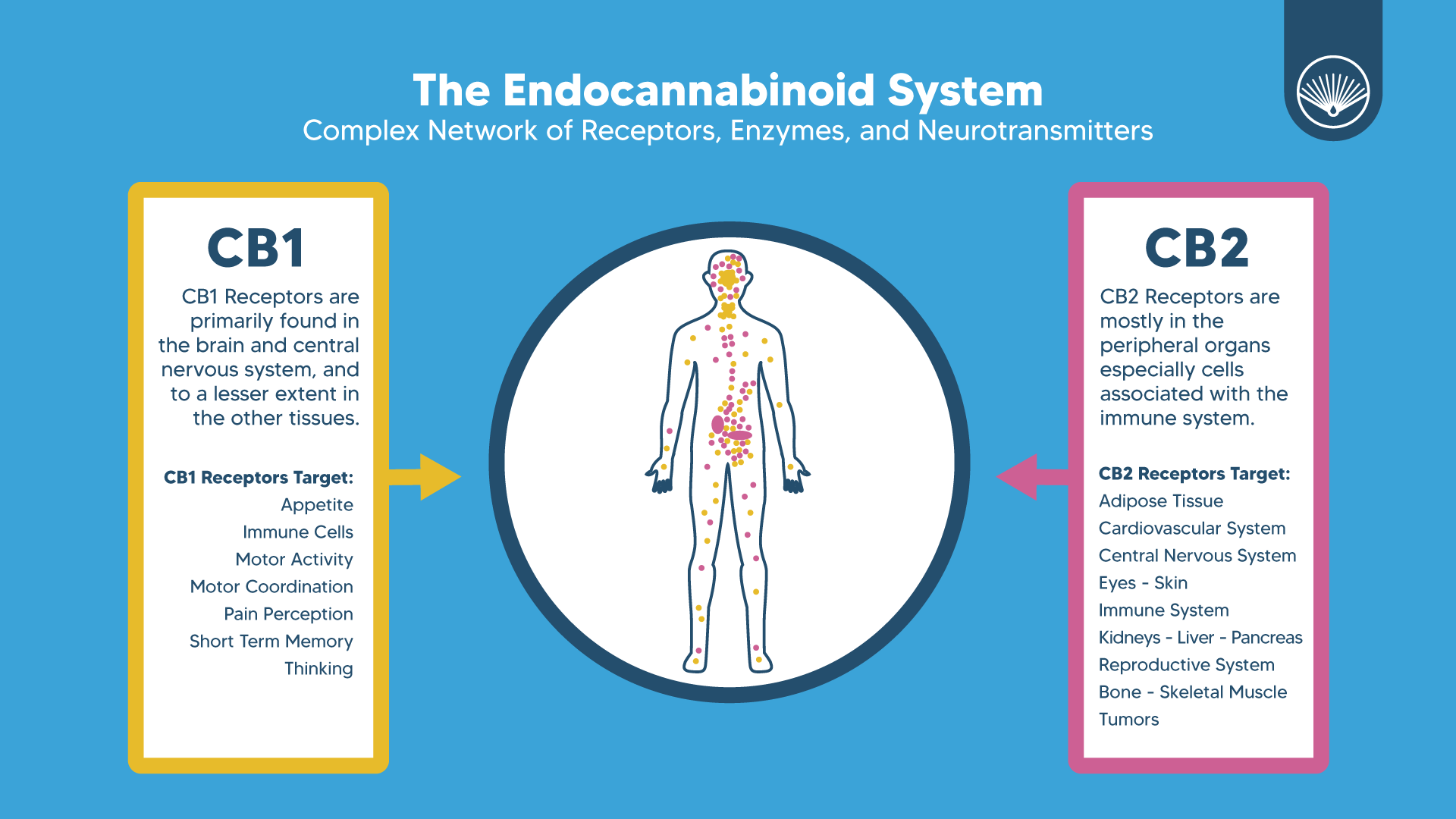The Endocannabinoid System
Its Discovery, What We Know Today, What’s Next in Research
-

By Jeremy Amos
Published: Monday, Oct 13, 2025

Every great industry is built on a great discovery. For CBD and cannabinoids, that discovery was the endocannabinoid system (ECS) - a complex network of receptors, enzymes, and neurotransmitters that helps maintain balance in the body.
The ECS explains why cannabinoids interact with our biology at all. Yet despite decades of progress, it’s still one of the least understood systems in human physiology.
To see where CBD and cannabinoid science is headed, we have to start with the ECS: yesterday’s discovery, today’s knowledge, and tomorrow’s unanswered questions.
Yesterday: A Hidden System Revealed
- 1960s: Israeli scientist Raphael Mechoulam isolated THC and CBD.
- 1980s–1990s: Discovery of cannabinoid receptors CB1 and CB2; identification of endocannabinoids like anandamide and 2-AG.
- Revelation: The ECS was recognized as a regulatory system involved in mood, pain, appetite, sleep, and immune function.
Takeaway: Yesterday’s research proved that cannabinoids don’t act randomly -they connect to an entire biological system.
Today: What We Know About the ECS
- CB1 receptors: Primarily in the brain and central nervous system, influencing mood, memory, and pain perception.
- CB2 receptors: Found in immune cells and peripheral tissues, playing a role in inflammation and immunity.
- Endocannabinoids: Anandamide (“the bliss molecule”) and 2-AG, produced naturally in the body.
- Enzymes: Break down endocannabinoids to regulate balance.
Current research suggests the ECS helps regulate homeostasis - the body’s ability to maintain equilibrium. Dysfunction in the ECS may play a role in conditions ranging from anxiety to chronic pain.
Takeaway: Today, the ECS is understood as a master regulator, but clinical applications remain early-stage.
Tomorrow: The Future of ECS Research
The next decade will bring deeper insights into how the ECS can be targeted for therapeutic benefit.
- Personalized medicine: Genetic differences in ECS function may explain why people respond differently to cannabinoids.
- Beyond CB1/CB2: Discovery of additional receptor sites (like GPR55) could expand our understanding of cannabinoid activity.
- Pharmaceutical potential: Ongoing trials explore cannabinoids for epilepsy, anxiety, inflammation, and metabolic disorders.
- “Clinical endocannabinoid deficiency”: A hypothesis that low ECS tone contributes to conditions like migraine, fibromyalgia, and IBS.
Takeaway: Tomorrow, ECS research could transform how we treat chronic conditions and optimize human health.
What This Means for Brands (and OBX)
- Stay evidence-aligned. As ECS research evolves, align claims with the strongest science.
- Educate. Help consumers understand how CBD interacts with the ECS—without oversimplifying.
- Innovate responsibly. Develop products that respect what’s known, while preparing for new discoveries.
At OBX, we’re committed to advancing transparency and science-based formulations that work with the body’s endocannabinoid system.




